Vines are handy for trellis or lattice arbors, to trace up trees, or to decorate a mailbox.
For many, the thought of planting a native vine in their landscape or garden is preferential due to their easy maintenance.
If you are considering a native vine, then these profiles should give you a few choices to pick from.
Ampelaster carolinianus (Climbing Aster)
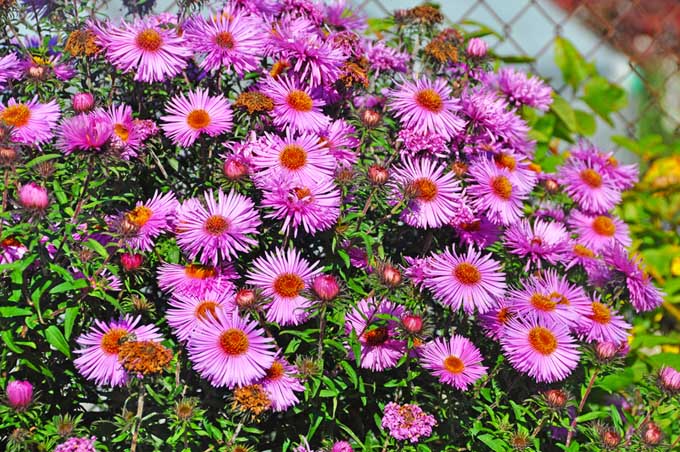
This fragrant vine may get invasive, so take care to keep an eye on it as it grows. It will grow up to 12 feet long and needs a spacing of 4 feet across.
It prefers to grow in sun to partial shade in moist soil. Butterflies and birds love this vine.
Expect pink/purple blooms in late summer to mid fall. You may divide the root ball on this one to propagate.
Aristolochia macrophylla Lam. (Pipevine)
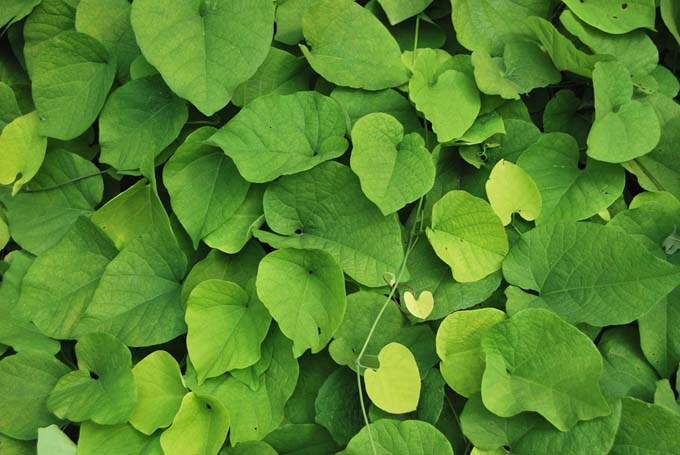
This one grows 20-30 feet long and needs a spacing of 20-30 feet as well. It likes full sun to partial shade and will produce non-noticeable bronze flowers in late summer.
Butterflies and the Pipevine Swallow bird love this plant as it’s very fragrant. A strong and sturdy vine, this needs to be on a stout trellis.
To propagate this very fast climber, you need to divide its root ball.
Bignonia capreolata L. (Crossvine)
This fast growing plant is an evergreen vine that reaches up to 15 feet in length.
It has tubular flowers; red on the outside and yellow on the inside when in the wild, orange/red/purple range when cultivated.
It will bloom from late April to May. It prefers full sun.
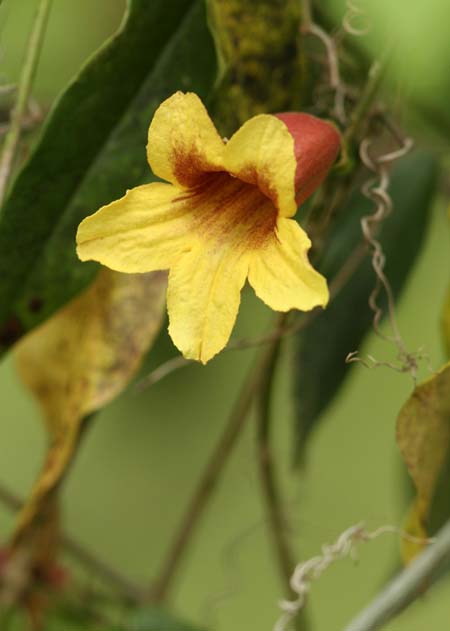
Read more about growing crossvine here.
Campsis radicans (L.) Seem. ex Bureau (Trumpet Creeper)
Although this plant can be invasive it is great for arbors or fences.
Its trumpet-shaped flowers grow on a woody vine up to 40 feet.
It is a fast grower, especially when grown with full sun and rich moist soil. Often confused with a honeysuckle, the trumpet vine may have yellow, orange or red blooms.
Hummingbirds love the blooms and will hang around as long as they are flowering. You may propagate them from suckers and roots.
Caution needs to be taken, as it can be a skin irritant.
For more on this plant, see our guide to flowering perennials to grow in southern climates.
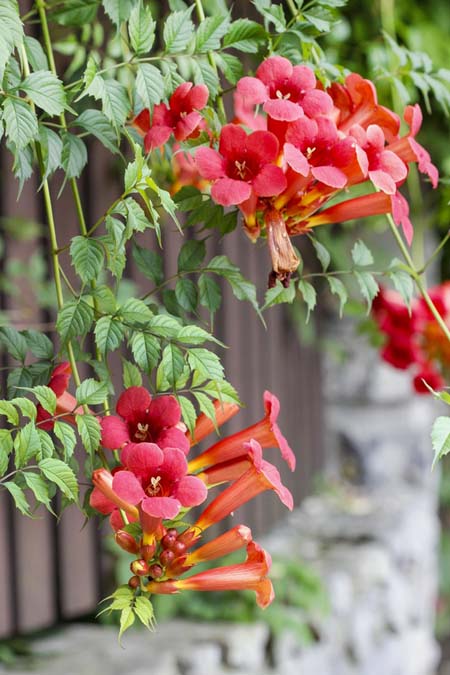
Clematis crispa (L.) ()
This rapidly growing vine will grow to 6-10 feet at maturity.
It has blue, pink, lavender, or white flowers and they are bell shaped.
It prefers partial to full shade. Its seed heads look like hedgehogs. It dies off every year.
Clematis virginiana L. (Devil’s Darning Needles, Virgin’s Bower)
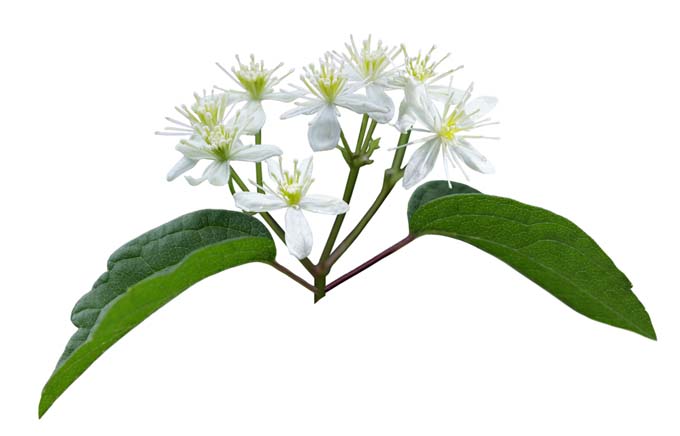
This deciduous vine is a rapid grower, reaching maturity at around 18 feet. It is a member of the Buttercup family, and can be found in thickets and stream banks.
With distinctive string like seeds, this will bloom with white flowers late summer to fall. Its blooms have a faint fragrance.
Plant this in full sun or partial shade for maximum benefits.
Cocculus carolinus (L.) DC. (Carolina Coralbead)
This vine grows 10-12 feet long and needs at least 3-4 foot spacing. It prefers full sun to partial shade.
Its pale green blooms come in summer and the red berries begin in fall. The foliage is shiny and deciduous, and pretty to look at.
Coralbead’s berries look like coral beads, hence its name. You may propagate these by stem cuttings or by seed started indoors.
BEWARE: All parts are poisonous if ingested.
Gelsemium sempervirens (L.) St. Hil. (Evening Trumpetflower, Carolina Jessamine)
You may need to grow these plants in pots to contain; it can get away from you in a garden.
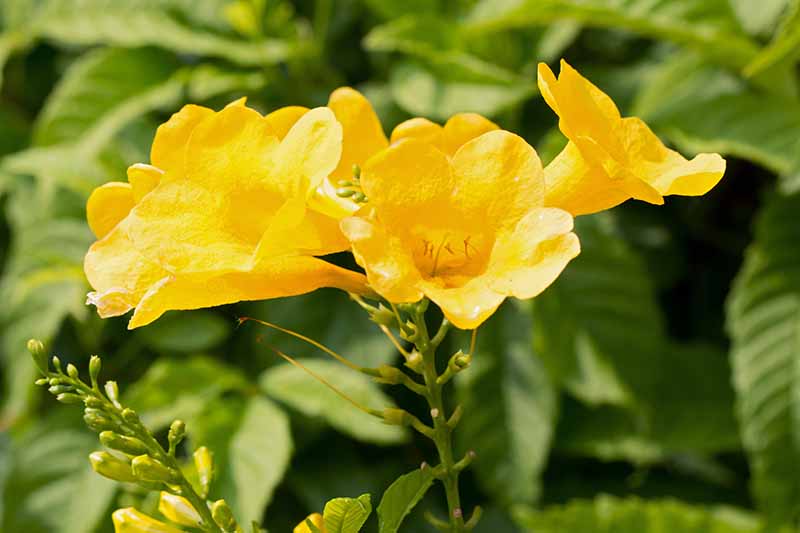
It is a vine growing up to 20 feet with bright yellow flowers appearing mid spring. It is a fragrant favorite of mailboxes.
You need to divide the root ball to propagate.
BEWARE: some parts of this plant are poisonous if ingested.
Read more about growing Carolina jessamine here.
Lonicera sempervirens L. (Coral Honeysuckle, Trumpet Honeysuckle)
This vine is great for wildlife gardens; growing up to 15 feet in length. It likes sun or partial shade and has red or yellow trumpet like flowers.
Bloom season is April to August. This is very fragrant; a favorite of bees, birds, and butterflies. It has evergreen foliage.
Propagate this from stem cuttings.
BEWARE: Some parts of this are poisonous.
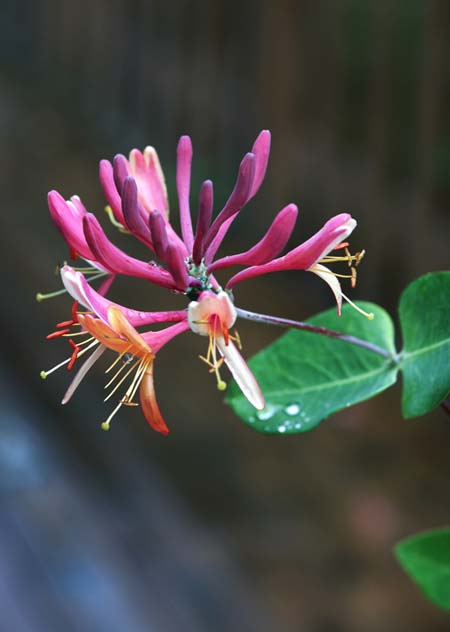
Mikania scandens (L.) Willd. (Climbing Hempvine)
This plant grows up to 15 feet long. It has smoky pale pink or white flowers in late summer to mid fall. It prefers full sun.
It has herbaceous foliage and can be invasive if not watched. Divide the root ball to propagate.
Parthenocissus quinquefolia (L.) Planch. (Virginia Creeper)
This vine gets 6-8 feet long and requires a spacing of 3-4 feet. It likes sun to partial shade and has average water needs.

There is deciduous variegated foliage. It has an interesting hairy bark pattern due to its tendrils. When it’s growing, the tendrils are bright orange brown.
Expect blue-black berries in late summer
BEWARE: handling this may cause skin irritation.
Find tips on growing Virginia creeper here.
Passiflora incarnata L. (Purple Passionflower)
This is a hardy and fast grower. It will grow up to 12 feet in length. It has tendrils to climb. Its flowers are 2-3 inches in diameter and are white with purple filaments.
Its white fleshy center will remind you of a jellyfish.
This one prefers full to partial shade and will die back in winter.
Read more about growing passion flower here.
Wisteria frutescens (L.) Poir. (American Wisteria)
This gets up to 20 feet tall and has a spread of 12 feet. It is a fast grower and very fragrant. Its blooms are blue or purple and come mid spring.
It’s a woody vine from the bean family. The flowers resembles grape bunches.
Plant this one in sun or partial shade.
BEWARE: the plant and seed are poisonous if ingested.
© Ask the Experts, LLC. ALL RIGHTS RESERVED. See our TOS for more details. Uncredited photos: Shutterstock.
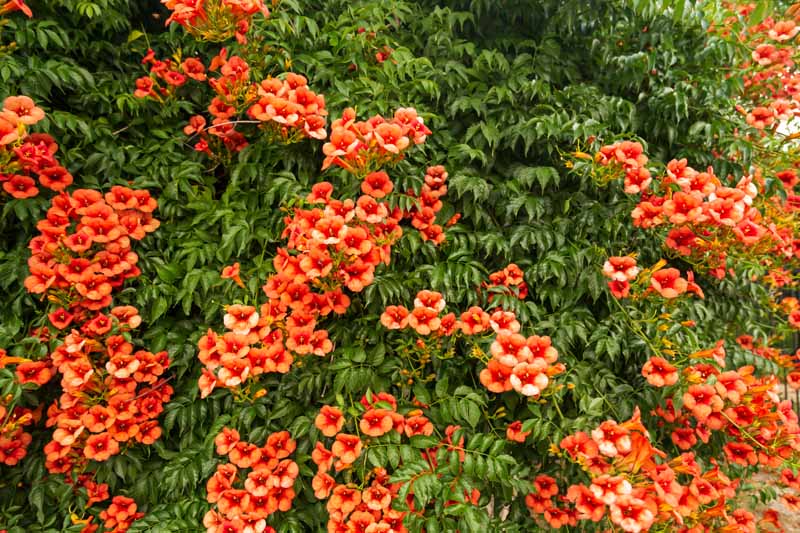
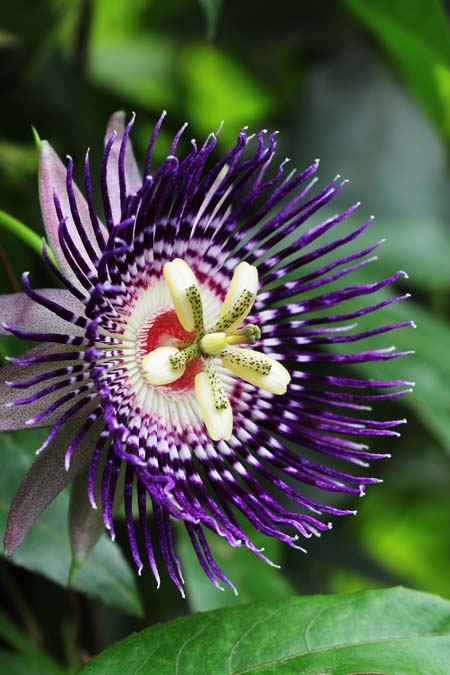
The flower pictured under Carolina Jessamine is Brugmansia or Angel’s Trumpet. A pretty if poisonous shrub, but definitely not Carolina Jessamine!